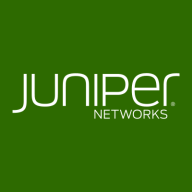

Juniper Mist Wireless Access Points and Cambium Networks Wireless LAN are competitors in the network management technology category. Juniper seems to have the upper hand due to its advanced AI-driven features for network optimization.
Features: Juniper Mist offers AI-driven network management with features like Marvis for dynamic problem detection, comprehensive network insight, and rapid updates. These capabilities provide nuanced control, aiding network optimization and user engagement. Cambium Networks focuses on ease of configuration, extended range, and no licensing hassles. Its stability and strong coverage make it suitable for environments needing point-to-multipoint connections.
Room for Improvement: Juniper Mist could improve pricing, third-party system integration, and AI-driven feature usability to expand accessibility. Cambium Networks could enhance configuration options, introduce features like bandwidth management and web filtering, and improve market visibility with more competitive pricing and streamlined deployment processes.
Ease of Deployment and Customer Service: Juniper Mist provides flexible deployment with various cloud configurations and well-rated technical support, despite some calls for faster service. Cambium Networks offers hybrid and on-premises setups with reliable customer service, though direct support could be enhanced.
Pricing and ROI: Juniper Wireless AP is costly but justified through high-end features and strong support, resulting in substantial ROI and network efficiency improvements. Cambium Networks offers competitive pricing with no additional licensing fees, providing substantial value for mid-sized businesses despite higher initial costs compared to some competitors.


Juniper Wireless Access Points work in conjunction with Juniper Mist Cloud Services and Mist AI to deliver premier wireless access capabilities. The Juniper Mist Edge extends microservices to the campus to bring agility and scale while enabling new applications at the edge.
We monitor all Wireless LAN reviews to prevent fraudulent reviews and keep review quality high. We do not post reviews by company employees or direct competitors. We validate each review for authenticity via cross-reference with LinkedIn, and personal follow-up with the reviewer when necessary.